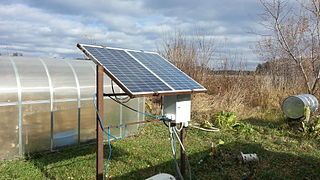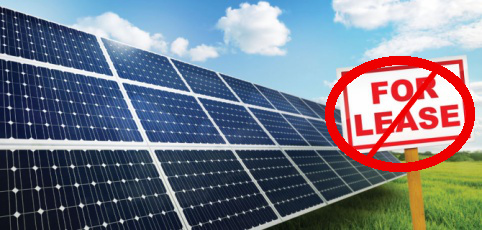From Guest Blogger Nick Tedesco: Why It Is Better To Own Than Lease A Solar Power System

These large, well funded companies have done well in selling lease arrangements to less than savvy homeowners. The fact is that these homeowners could have acquired their own financing and saved considerably more.
Of course, it is possible to mention at least one positive thing about the companies pushing leases; they have managed to jump start an industry that was almost non-existent just a few years ago. A large majority of residential rooftop solar was installed in the past few years.
The fact is that the residential solar power revolution is upon us. According to the Solar Energy Industries Association, a solar power system is installed on a home every four minutes.
The revolution will only gain traction as word gets out how very affordable self-financed solar can be. The key phrase here is “self-financed”. While it can be argued that the leasing companies have done a great job selling many thousands of people on solar and jump starting a clean energy revolution, they have also helped perpetuate the myth that solar power is still too expensive.
The reasons for this are fairly simple. In addition to investors wanting to see a healthy profit margin, plenty of money was spent on the marketing of solar leases that needed to be recouped. After all of this, these companies were still able to offer lease payments that were less than what some homeowners were paying for their electricity.
If you take out the middle man (the investors just mentioned), you’ll have a situation where solar power is much cheaper than conventional energy for millions of homeowners.
So how do the numbers workout? Well, there are a few different ways to look at it. For homeowners that can afford to pay cash for their systems, their payback range is about 5-8 years. That means that their solar panel system will pay for itself in less than a decade and provide essentially free energy for the next twenty years at least.
Another typical example would be for a homeowner to acquire a readily available government backed home improvement loan. For many Americans, payments on a 10 year solar loan could be comparable to what they are currently paying for conventional energy. After 10 years, the homeowner can benefit from decades of free energy.
Homeowners end up paying way too much when signing a 20 year lease. Long after their systems are paid for, they will still be making solar payments due to the contract that was signed.
Word is finally getting out that signing a 20 year solar lease is not the only way to go solar. Homeowners are becoming aware of the many alternative financing options that they have which can save them many thousands of dollars over a 20 year period.
So far, we have just discussed the current economic benefits of residential solar power. Homeowners are becoming increasingly aware of air pollution and climate change issues. Many people want to be able to do their part to help make the world more livable for future generations.
Once the word gets out that solar power is truly affordable, we can have a win-win-win situation. It’s a win for homeowners saving money on utility expenses, it’s a win for the environment, and it’s a win for local economies as thousands of jobs get created.
I have been a passionate advocate of solar power for many years. Learn more about residential solar power at Solar-Power-Now.com and get connected to solar contractors that don’t push leases.


In my opinion, solar panels are the way of the future because they offer great benefits to both the consumer and environment. As you mentioned, it’s definitely a win-win situation for all. Thanks for sharing your post!